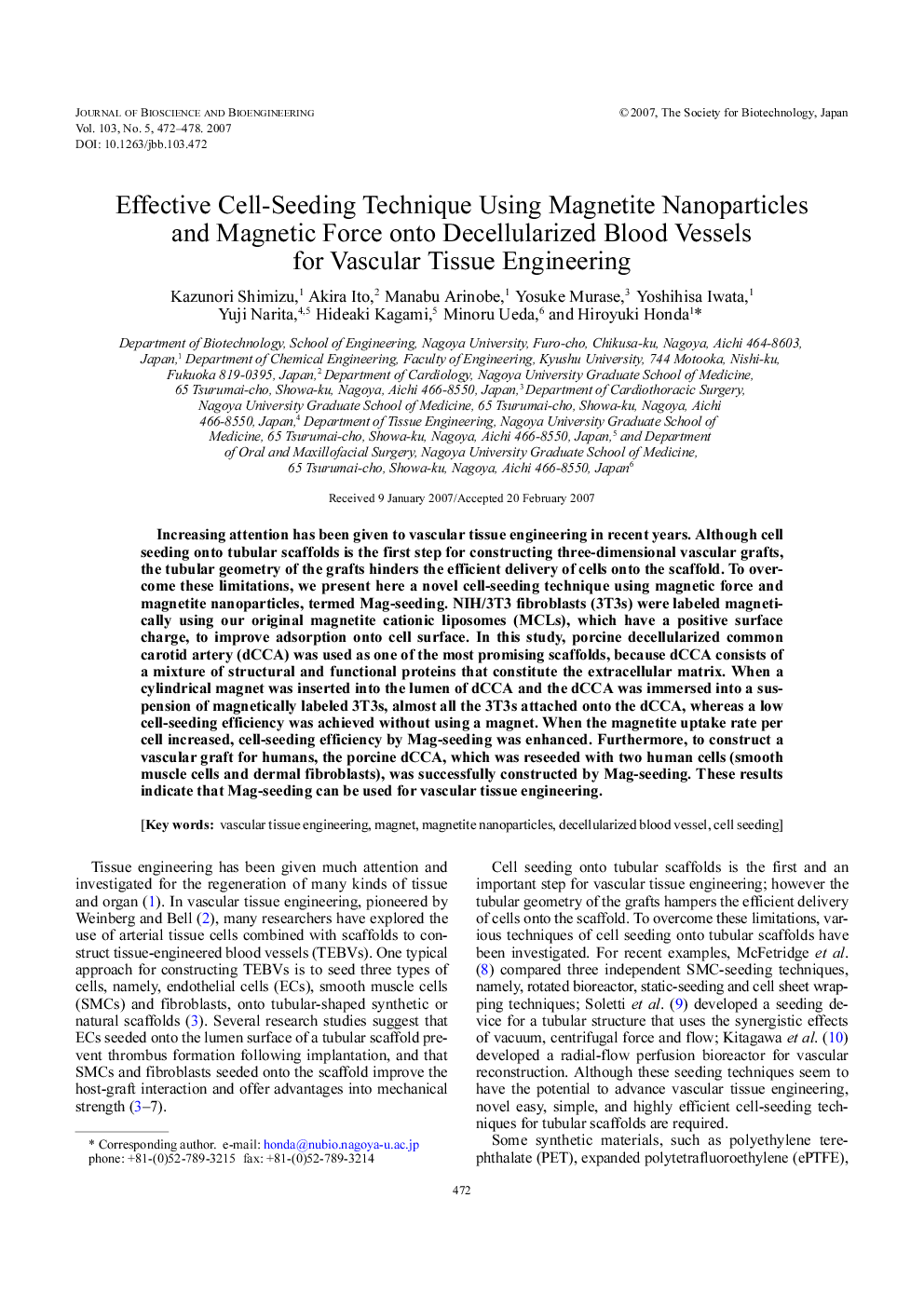| Article ID | Journal | Published Year | Pages | File Type |
|---|---|---|---|---|
| 22227 | Journal of Bioscience and Bioengineering | 2007 | 7 Pages |
Increasing attention has been given to vascular tissue engineering in recent years. Although cell seeding onto tubular scaffolds is the first step for constructing three-dimensional vascular grafts, the tubular geometry of the grafts hinders the efficient delivery of cells onto the scaffold. To overcome these limitations, we present here a novel cell-seeding technique using magnetic force and magnetite nanoparticles, termed Mag-seeding. NIH/3T3 fibroblasts (3T3s) were labeled magnetically using our original magnetite cationic liposomes (MCLs), which have a positive surface charge, to improve adsorption onto cell surface. In this study, porcine decellularized common carotid artery (dCCA) was used as one of the most promising scaffolds, because dCCA consists of a mixture of structural and functional proteins that constitute the extracellular matrix. When a cylindrical magnet was inserted into the lumen of dCCA and the dCCA was immersed into a suspension of magnetically labeled 3T3s, almost all the 3T3s attached onto the dCCA, whereas a low cell-seeding efficiency was achieved without using a magnet. When the magnetite uptake rate per cell increased, cell-seeding efficiency by Mag-seeding was enhanced. Furthermore, to construct a vascular graft for humans, the porcine dCCA, which was reseeded with two human cells (smooth muscle cells and dermal fibroblasts), was successfully constructed by Mag-seeding. These results indicate that Mag-seeding can be used for vascular tissue engineering.
